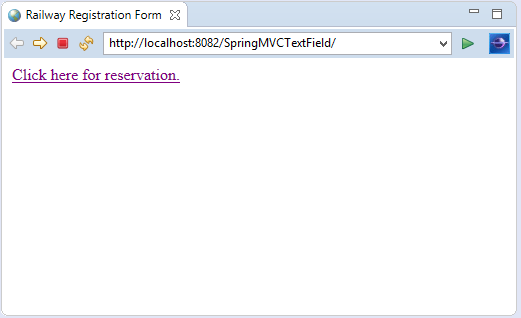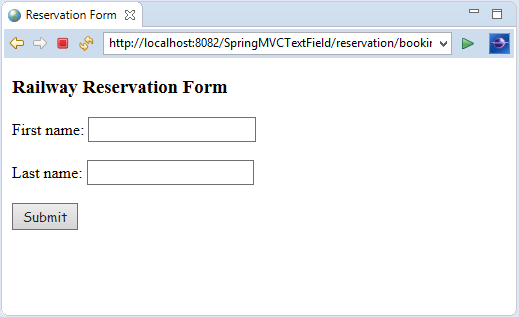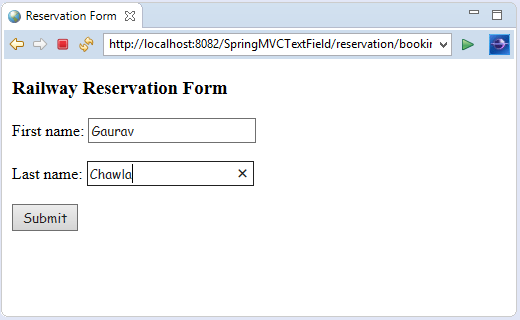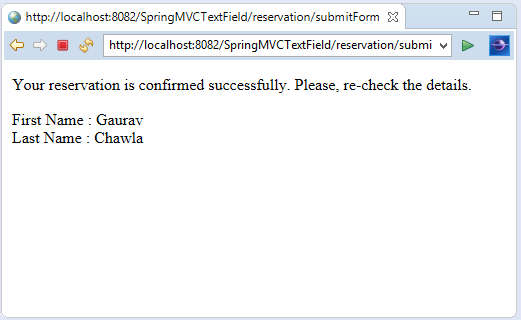The Spring MVC form text field tag generates an HTML input tag using the bound value. By default, the type of the input tag is text.
Syntax
Here, path attribute binds the form field to the bean property.
The Spring MVC form tag library also provides other input types such as email, date, tel, etc.
For email:
For date:
Example of Spring MVC Form Text Field
Let's see an example to create a railway reservation form using form tag library.
1. Add dependencies to pom.xml file.
2. Create the bean class
Here, the bean class contains the variables (along setter and getter methods) corresponding to the input field exist in the form.
Reservation.java
3. Create the controller class
ReservationController.java
4. Provide the entry of controller in the web.xml file
web.xml
5. Define the bean in the xml file
spring-servlet.xml
6. Create the requested page
index.jsp
7. Create other view components
reservation-page.jsp
Note - The value passed with the @ModelAttribute annotation should be the same to the modelAttribute value present in the view page.
confirmation-page.jsp
Output:




No comments:
Post a Comment